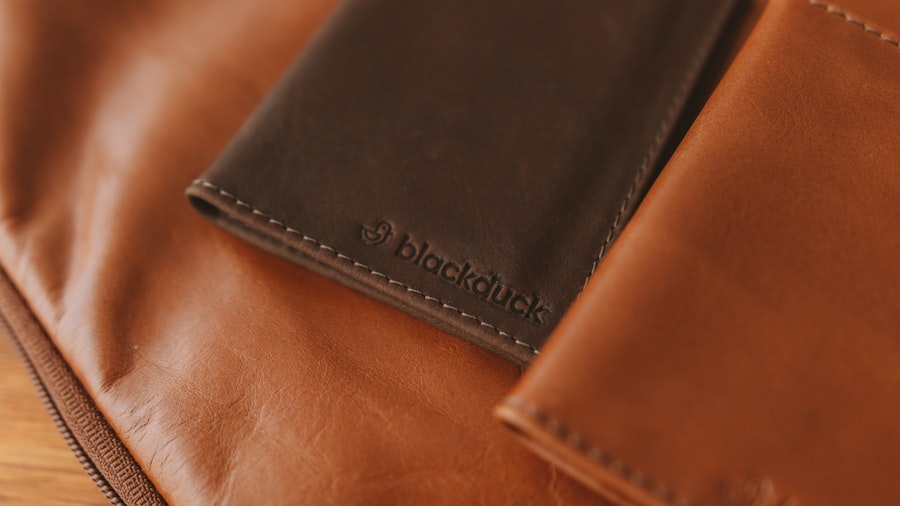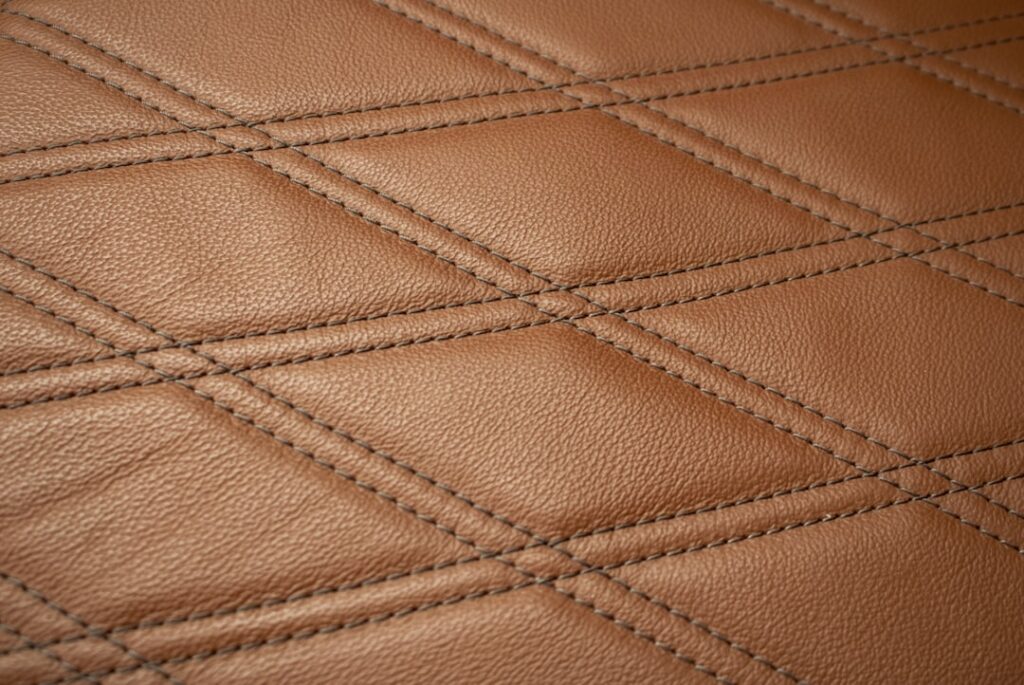In recent years, the fashion industry has witnessed a significant shift towards sustainability, with plant-based leather emerging as a prominent alternative to traditional animal leather. This innovative material, derived from various plant sources such as pineapple leaves, apple peels, and mushrooms, has gained traction among consumers and designers alike. The rise of plant-based leather can be attributed to a growing awareness of environmental issues and a desire for cruelty-free fashion options.
As consumers become more conscious of their purchasing decisions, the demand for sustainable materials has surged, prompting brands to explore alternatives that align with ethical and ecological values. The transition to plant-based leather is not merely a trend; it represents a fundamental change in how the fashion industry approaches material sourcing and production. With advancements in technology and an increasing number of startups dedicated to developing sustainable materials, plant-based leather is becoming more accessible and versatile.
This shift is not only reshaping the landscape of fashion but also challenging long-standing perceptions about luxury and quality associated with traditional leather goods. As the market for plant-based leather continues to expand, it is clear that this innovative material is poised to play a significant role in the future of fashion.
Key Takeaways
- Plant-based leather is on the rise as a sustainable alternative to traditional leather.
- Traditional leather production has a significant environmental impact, including deforestation and water pollution.
- Plant-based leather offers benefits such as reduced environmental impact, cruelty-free production, and innovative design possibilities.
- Innovations in plant-based leather technology are driving the development of high-quality, durable, and versatile materials.
- Fashion brands play a crucial role in driving the adoption of plant-based leather and shaping the future of sustainable fashion.
The Environmental Impact of Traditional Leather
The environmental consequences of traditional leather production are profound and far-reaching. The process of raising livestock for leather involves significant land use, water consumption, and greenhouse gas emissions. Cattle farming, in particular, is a major contributor to deforestation, as vast areas of forest are cleared to create grazing land.
Additionally, the tanning process used to treat animal hides often involves toxic chemicals that can pollute waterways and harm local ecosystems. These environmental impacts have led to increasing scrutiny of the leather industry and its sustainability practices. Moreover, the carbon footprint associated with traditional leather production is substantial.
From the methane emissions produced by livestock to the energy-intensive processes involved in tanning and finishing leather goods, the environmental toll is considerable. As consumers become more aware of these issues, there is a growing demand for alternatives that minimize harm to the planet. This awareness has catalyzed the rise of plant-based leather as a viable solution, offering a more sustainable option that aligns with the values of environmentally conscious consumers.
The Benefits of Plant-Based Leather

Plant-based leather offers numerous benefits that make it an attractive alternative to traditional leather. One of the most significant advantages is its reduced environmental impact. By utilizing renewable resources such as fruits, vegetables, and agricultural byproducts, plant-based leather minimizes reliance on fossil fuels and decreases carbon emissions associated with livestock farming.
This shift not only helps combat climate change but also promotes biodiversity by reducing the need for land conversion and habitat destruction. In addition to its environmental benefits, plant-based leather often boasts unique aesthetic qualities that appeal to consumers. Each type of plant-based leather has its own distinct texture and appearance, allowing for greater creativity in design.
For instance, materials derived from pineapple leaves, known as Piñatex, have a soft yet durable finish that mimics traditional leather while offering a fresh and modern look. Furthermore, many plant-based leathers are biodegradable or compostable, providing an end-of-life solution that traditional leather lacks. This combination of sustainability and style positions plant-based leather as a compelling choice for both consumers and designers seeking to make responsible fashion choices.
Innovations in Plant-Based Leather Technology
| Company | Technology | Advantages |
|---|---|---|
| Modern Meadow | Zoa | Biodegradable, customizable, and sustainable |
| Mycoworks | Mylo | Resembles traditional leather, sustainable, and versatile |
| Bolt Threads | Mycelium-based leather | Durable, sustainable, and cruelty-free |
The development of plant-based leather technology has seen remarkable innovations in recent years, driven by a combination of scientific research and creative experimentation. Companies are exploring various plant sources to create materials that not only replicate the look and feel of traditional leather but also enhance performance characteristics such as durability and water resistance. For example, mycelium-based leathers made from mushroom roots have gained popularity for their strength and versatility, while fruit waste leathers utilize byproducts from the food industry, reducing waste and promoting circularity.
Moreover, advancements in manufacturing processes have enabled the production of plant-based leathers at scale, making them more accessible to mainstream fashion brands. Techniques such as 3D printing and bioengineering are being employed to create innovative textures and finishes that push the boundaries of traditional leather design. As research continues to evolve, the potential for new plant-based materials is virtually limitless, paving the way for a future where sustainable fashion is not only achievable but also desirable.
The Role of Fashion Brands in Adopting Plant-Based Leather
Fashion brands play a crucial role in the adoption and promotion of plant-based leather within the industry. By integrating sustainable materials into their collections, brands can influence consumer behavior and set new standards for ethical fashion practices. Many forward-thinking designers are already embracing plant-based leather as part of their commitment to sustainability, showcasing its versatility in high-end collections as well as everyday wear.
This shift not only reflects changing consumer preferences but also positions brands as leaders in the movement towards more responsible fashion. Furthermore, collaborations between established fashion houses and innovative startups specializing in plant-based materials are becoming increasingly common. These partnerships allow brands to leverage cutting-edge technology while enhancing their sustainability credentials.
As more fashion labels adopt plant-based leather into their offerings, they contribute to a broader cultural shift that prioritizes environmental responsibility and ethical production methods. This collective effort is essential for driving change within the industry and encouraging consumers to embrace sustainable alternatives.
The Future of Plant-Based Leather in Fashion

The future of plant-based leather in fashion appears promising as consumer demand for sustainable options continues to grow. With increasing awareness of environmental issues and ethical considerations surrounding traditional leather production, more individuals are seeking alternatives that align with their values. As a result, plant-based leather is likely to become a staple material in both high-end and mass-market fashion lines.
The ongoing development of innovative materials will further enhance its appeal, allowing designers to create unique products that resonate with eco-conscious consumers. Moreover, as technology advances and production processes become more efficient, the cost of plant-based leather is expected to decrease over time. This affordability will make it easier for brands to incorporate sustainable materials into their collections without compromising on quality or style.
As plant-based leather gains traction in the market, it has the potential to redefine luxury fashion by prioritizing sustainability without sacrificing aesthetics or performance.
Challenges and Limitations of Plant-Based Leather
Despite its many advantages, plant-based leather faces several challenges and limitations that must be addressed for it to achieve widespread adoption in the fashion industry. One significant hurdle is consumer perception; some individuals may still associate traditional leather with luxury and quality, viewing plant-based alternatives as inferior or less desirable. Overcoming this bias will require effective marketing strategies that highlight the unique qualities and benefits of plant-based leather while educating consumers about its environmental advantages.
Additionally, scalability remains a concern for many producers of plant-based leather. While small-scale operations have successfully developed innovative materials, scaling up production to meet global demand poses logistical challenges. Ensuring consistent quality while maintaining sustainable practices can be difficult as production increases.
Furthermore, sourcing raw materials sustainably is essential; if not managed properly, the cultivation of plants for leather could lead to unintended environmental consequences such as monoculture farming or overexploitation of certain species.
Consumer Demand for Sustainable Fashion
Consumer demand for sustainable fashion has reached unprecedented levels in recent years, driven by a growing awareness of environmental issues and ethical concerns surrounding clothing production. More individuals are seeking out brands that prioritize sustainability in their practices, leading to a surge in interest for eco-friendly materials like plant-based leather. This shift in consumer behavior reflects a broader cultural movement towards conscious consumption, where individuals are increasingly considering the impact of their purchases on the planet.
As consumers become more informed about the environmental consequences of traditional fashion practices, they are actively seeking alternatives that align with their values. This demand has prompted many brands to reevaluate their sourcing strategies and incorporate sustainable materials into their collections. The rise of social media has further amplified this trend; consumers are sharing their preferences for sustainable fashion online, influencing others to make similar choices.
As this movement continues to grow, it is likely that plant-based leather will play an integral role in shaping the future landscape of fashion.
The Intersection of Fashion and Sustainability
The intersection of fashion and sustainability represents a transformative moment in the industry’s history. As awareness about climate change and ethical production practices rises, designers and brands are increasingly recognizing their responsibility to create products that do not harm the environment or exploit workers. This shift has led to a reimagining of what luxury means; rather than being defined solely by exclusivity or opulence, luxury is now increasingly associated with sustainability and ethical practices.
At this intersection lies an opportunity for innovation and creativity. Designers are challenged to think outside the box when it comes to material sourcing and production methods while still delivering aesthetically pleasing products. The emergence of plant-based leather exemplifies this evolution; it allows designers to explore new textures and styles while adhering to sustainable principles.
As more brands embrace this intersection between fashion and sustainability, they contribute to a collective effort towards creating a more responsible industry.
Ethical Considerations in Leather Production
Ethical considerations play a crucial role in discussions surrounding leather production, particularly as consumers become more aware of animal welfare issues associated with traditional methods. The treatment of animals raised for their hides has long been a contentious topic; many individuals are uncomfortable with the idea of using animal products in fashion due to concerns about cruelty and exploitation. In response to these ethical dilemmas, plant-based leather offers a compassionate alternative that aligns with the values of those seeking cruelty-free options.
Moreover, ethical considerations extend beyond animal welfare; they also encompass labor practices within the fashion industry. Many traditional leather production facilities operate under conditions that may exploit workers or fail to provide fair wages and safe working environments. By adopting plant-based leather alternatives, brands can promote ethical labor practices while supporting local economies through sustainable sourcing initiatives.
This holistic approach to ethics in fashion underscores the importance of considering both environmental impact and social responsibility when making purchasing decisions.
How Plant-Based Leather is Changing the Fashion Industry
Plant-based leather is fundamentally changing the fashion industry by challenging established norms around material sourcing and production practices. As more brands adopt this innovative alternative, they are redefining what it means to be fashionable in an era where sustainability is paramount. The integration of plant-based leathers into mainstream collections signals a shift away from traditional materials towards more responsible options that prioritize environmental stewardship.
This transformation is not limited to aesthetics; it also influences consumer behavior and expectations. As shoppers increasingly seek out sustainable options, they are driving demand for transparency within the industry regarding sourcing practices and environmental impact assessments. In response, brands are compelled to adopt more sustainable practices throughout their supply chains while communicating their commitments clearly to consumers.
Ultimately, plant-based leather represents not just an alternative material but a catalyst for broader change within the fashion industry—one that prioritizes sustainability without compromising on style or quality.
FAQs
What is plant-based leather?
Plant-based leather, also known as vegan leather or faux leather, is a type of leather alternative that is made from plant materials such as pineapple leaves, cork, apple peels, and other non-animal sources. It is designed to mimic the look and feel of traditional leather without using any animal products.
How is plant-based leather made?
Plant-based leather can be made using a variety of methods, including using natural fibers, plant-based polymers, and other sustainable materials. Some common techniques for creating plant-based leather include using pineapple leaf fibers to create Pinatex, using cork to create leather-like material, and using apple peels to create a leather alternative.
What are the benefits of plant-based leather?
Plant-based leather offers several benefits, including being cruelty-free, more sustainable, and environmentally friendly. It also provides an alternative for individuals who prefer not to use animal products or who have ethical concerns about traditional leather production.
Is plant-based leather environmentally friendly?
Plant-based leather is often considered more environmentally friendly than traditional leather, as it does not require the use of animal products and can be made from sustainable and renewable plant materials. However, the environmental impact can vary depending on the specific materials and production processes used.
Is plant-based leather durable?
The durability of plant-based leather can vary depending on the specific materials and production methods used. Some plant-based leather alternatives are designed to be as durable as traditional leather, while others may have different properties and require specific care and maintenance.





